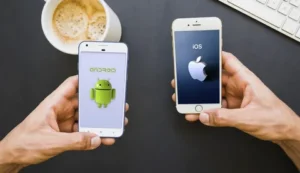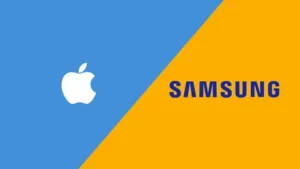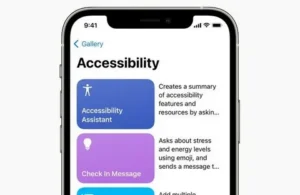Brand loyalty plays a crucial role in the smartphone market, with users often exhibiting strong allegiance to either Samsung or Apple. This loyalty is driven by various factors, including user experience, ecosystem integration, and perceived brand value. Customers who have invested in one ecosystem may face high switching costs, such as losing data, purchasing new accessories, and adapting to a different operating system.
Samsung and Apple have both cultivated loyal customer bases through their distinct approaches. Samsung’s Android-based devices appeal to users seeking customization options, a wide range of hardware choices, and compatibility with Google’s ecosystem. On the other hand, Apple’s iOS ecosystem offers a seamless integration across devices, prioritizing user experience and privacy.
Customer retention rates are generally higher for Apple, as iOS users tend to exhibit stronger brand loyalty due to the closed ecosystem and perceived premium experience. However, Samsung has made strides in retaining customers by offering compelling hardware features, competitive pricing, and a growing ecosystem of compatible devices and services.
Brand loyalty can also be influenced by factors such as perceived value, social status, and peer influence. Apple’s premium positioning and aspirational branding resonate with certain demographics, while Samsung’s diverse product lineup and value proposition appeal to a broader range of consumers.
Ultimately, the choice between Samsung and Apple often comes down to personal preferences, priorities, and the willingness to explore alternative ecosystems. Both companies continue to invest in customer loyalty programs, product innovation, and ecosystem development to retain and attract users in the highly competitive smartphone market.
Operating Systems: Android vs iOS

The choice between Samsung (Android) and Apple (iOS) smartphones largely comes down to the underlying operating system. Android and iOS offer vastly different user experiences, app ecosystems, and levels of customization.
Android
Android is an open-source platform developed by Google, which allows manufacturers like Samsung to heavily customize the look, feel, and features of the operating system. This results in a more flexible and customizable experience, where users can tweak everything from the home screen layout and app icons to system-level settings and themes. However, this level of customization can also lead to a less cohesive and sometimes cluttered user experience compared to iOS.
IOS
On the other hand, iOS is a closed ecosystem developed and tightly controlled by Apple. While this means less customization options, it also ensures a more streamlined and consistent user experience across all iOS devices. Apple’s control over both hardware and software allows for seamless integration and optimization, resulting in a smooth and polished overall experience.
When it comes to app ecosystems, both Android and iOS offer millions of apps in their respective app stores. However, iOS tends to have a slight edge in terms of app quality and exclusivity, as many developers prioritize iOS app development due to Apple’s strict guidelines and the generally more lucrative iOS user base.
In terms of user experience, iOS is often praised for its intuitive and user-friendly interface, while Android can feel more complex and overwhelming for some users, especially those new to the platform. However, Android’s flexibility and customization options can be appealing to power users who want to tailor their experience to their specific needs.
Ultimately, the choice between Android and iOS comes down to personal preferences and priorities. If you value customization, flexibility, and a more open ecosystem, Android (and Samsung) may be the better choice. If you prioritize a streamlined and cohesive user experience, app quality, and seamless integration with other Apple devices, iOS (and Apple) could be the way to go.
Hardware Specifications
When it comes to hardware specifications, Samsung and Apple take different approaches. Samsung typically offers a wide range of models with varying specs to cater to different budgets and preferences, while Apple tends to have a more streamlined lineup with fewer but more powerful options.
Processor:
Samsung’s flagship devices often use the latest Qualcomm Snapdragon or their own Exynos chipsets, which are powerful and capable of handling demanding tasks. Apple, on the other hand, designs its own A-series chips, which are known for their impressive performance and energy efficiency.
RAM and Storage:
Samsung devices generally offer more RAM and storage options, with some models featuring up to 16GB of RAM and 1TB of internal storage. Apple’s iPhones typically have less RAM but optimize their software to run efficiently on the available memory. Storage options range from 64GB to 1 TB.
Display:
Both companies offer high-quality displays, but they differ in technology and approach. Samsung is known for its Super AMOLED displays, which provide vibrant colors and deep blacks, while Apple uses Liquid Retina displays with superior color accuracy and brightness.
Camera:
Samsung and Apple have been at the forefront of smartphone camera innovation. Samsung devices often feature multiple rear cameras with advanced features like optical zoom, ultra-wide lenses, and high-resolution sensors. Apple’s iPhones are renowned for their computational photography capabilities, delivering excellent image quality and video recording.
Battery Life:
Battery life has been a long-standing concern for smartphone users. Samsung typically includes larger battery capacities in their devices, which can translate to longer battery life. However, Apple’s optimization of hardware and software often results in impressive battery performance despite having smaller battery capacities.
Overall, both Samsung and Apple offer top-tier hardware specifications, but their approaches differ. Samsung caters to a wider range of preferences with diverse options, while Apple focuses on a more streamlined and optimized experience. Ultimately, the choice depends on individual priorities, such as performance, display quality, camera capabilities, and battery life.
Design and Build Quality

When it comes to design and build quality, Samsung and Apple take different approaches. Samsung often opts for a combination of metal and glass, resulting in a premium and sleek look. However, the glass back on many Samsung models can be prone to shattering if dropped, despite the use of Gorilla Glass. Apple, on the other hand, favors a unibody aluminum design that provides a solid and durable feel. The iPhone’s construction is generally more rigid and resistant to bending or flexing.
Both brands offer water and dust resistance, with Samsung typically providing higher IP ratings for enhanced water protection. However, Apple’s water resistance has improved significantly in recent years, with the latest iPhones capable of withstanding submersion in up to 6 meters of water.
In terms of aesthetics, it’s a matter of personal preference. Samsung’s designs often incorporate curved edges and a more rounded aesthetic, while Apple’s iPhones maintain a minimalist and angular look. Samsung also offers a wider range of color options, catering to diverse tastes.
Regarding durability, both brands use reinforced glass and employ techniques like ion-strengthening to improve scratch resistance. However, independent drop tests have shown that iPhones tend to fare better in terms of survivability after accidental drops, thanks to their sturdy construction and strategic use of materials.
Overall, while Samsung and Apple take different design approaches, both brands offer premium build quality and aesthetics. The choice often comes down to personal preferences, such as whether you prefer a more curved or angular design, as well as priorities like water resistance or drop protection.
Camera Performance
Smartphone cameras have become a crucial factor for many consumers when choosing between Samsung and Apple devices. Both brands consistently deliver impressive camera capabilities, but they approach it differently.
Samsung has long been at the forefront of camera innovation, packing their flagship phones with cutting-edge hardware and features. Their latest models boast high-resolution sensors, advanced optical image stabilization, and impressive zoom capabilities. Samsung’s camera systems often include multiple lenses, allowing for versatile shooting modes like ultra-wide, telephoto, and macro photography.
Apple, on the other hand, has traditionally focused on computational photography and software optimization. While their camera hardware may not always match Samsung’s raw specs, Apple’s image processing algorithms and machine learning techniques produce consistently excellent results. iPhones are renowned for their natural color rendering, impressive low-light performance, and seamless integration of various camera modes.
When it comes to video recording, both brands offer exceptional capabilities. Samsung phones often support higher resolutions and frame rates, catering to professional videographers and content creators. Apple’s video recording, while slightly more limited in terms of resolution and frame rate options, is highly praised for its smooth stabilization and cinematic-like quality.
Ultimately, the choice between Samsung and Apple for camera performance comes down to personal preferences and priorities. Samsung’s approach caters to those who value cutting-edge hardware and a wealth of manual controls, while Apple’s strength lies in its ability to deliver consistently great results with minimal user intervention through its powerful computational photography techniques.
Software Updates and Support
One of the most critical factors to consider when choosing between Samsung and Apple is the frequency and duration of software updates and security patches. Apple has a well-established reputation for providing timely updates and extended software support for its devices, ensuring that users can enjoy the latest features, performance improvements, and security fixes for several years after purchasing a new iPhone.
On the other hand, Samsung’s track record with software updates has been somewhat inconsistent, particularly for its Android-based devices. While Samsung has made efforts to improve its update cadence in recent years, the frequency and timeliness of updates can still vary depending on the device model and region. Additionally, Samsung typically offers a shorter software support window compared to Apple, with many of its older devices no longer receiving major OS updates after a couple of years.
When it comes to security patches, Apple generally releases critical security updates promptly across its entire product lineup, ensuring that vulnerabilities are addressed swiftly. Samsung, like other Android manufacturers, relies on Google’s monthly security updates, which can sometimes result in delays before patches are rolled out to Samsung devices.
It’s worth noting that Apple’s tight control over both hardware and software allows for a more streamlined update process, whereas Samsung’s reliance on Google’s Android platform and the need for carrier approvals can introduce complexities and potential delays in the update rollout process.
Ecosystem Integration
The choice between Samsung and Apple often extends beyond just the smartphone itself. Both companies have developed robust ecosystems that seamlessly integrate their devices, services, and accessories. This ecosystem integration can greatly enhance the overall user experience and productivity.
Apple’s ecosystem is tightly knit, with seamless integration between iPhones, iPads, Macs, Apple Watch, and other Apple devices. Features like Continuity, Handoff, and iCloud ensure a smooth transition when switching between devices, allowing you to pick up where you left off. Additionally, Apple’s ecosystem includes services like iCloud, Apple Music, Apple TV+, and more, providing a cohesive experience across all your Apple products.
Samsung, on the other hand, leverages the Android ecosystem and its partnerships with Google and other manufacturers. Samsung’s devices integrate well with Google’s suite of services, including Gmail, Google Drive, Google Photos, and more. Additionally, Samsung’s SmartThings platform allows for seamless integration with a wide range of smart home devices, enabling you to control and automate various aspects of your home from your Samsung smartphone or tablet.
Both ecosystems offer advantages and disadvantages. Apple’s ecosystem is more tightly controlled and optimized for its own devices, ensuring a consistent user experience but potentially limiting third-party integrations. Samsung’s ecosystem, built on the open Android platform, offers more flexibility and a wider range of compatible devices and services, but may lack the same level of seamless integration as Apple’s ecosystem.
Ultimately, the choice between Samsung and Apple’s ecosystems depends on your personal preferences, the devices and services you already own, and the level of integration and automation you desire in your daily life.
Pricing and Value
When it comes to pricing and value, Samsung and Apple offer distinct approaches. Samsung typically provides a wider range of models at varying price points, catering to different budgets. Their flagship devices, while still expensive, tend to be more affordable than Apple’s premium iPhones. This makes Samsung an attractive option for those seeking high-end features without breaking the bank.
On the other hand, Apple’s pricing strategy is more streamlined, with a smaller lineup of devices that command premium prices. However, Apple’s tightly integrated ecosystem and long-term software support often justify the higher cost for many consumers. iPhones also tend to retain their resale value better than Samsung devices, making them a more viable long-term investment.
In terms of value, both brands offer compelling features and performance relative to their pricing. Samsung excels in providing impressive hardware specifications and cutting-edge technology at competitive prices, delivering excellent price-to-performance ratios. Apple, on the other hand, focuses on delivering a seamless user experience, top-notch build quality, and optimized software-hardware integration, which many users find worth the premium.
Ultimately, the choice between Samsung and Apple in terms of pricing and value will depend on individual budgets, priorities, and how much importance is placed on factors such as affordability, resale value, and the overall value proposition offered by each brand.
Enterprise and Business Use
For businesses and enterprises, the decision between Samsung and Apple devices often hinges on factors like security, device management capabilities, and integration with existing infrastructure. Both brands offer robust enterprise solutions, but their approaches differ.
Samsung’s Knox platform provides advanced security features, including secure boot, real-time kernel protection, and hardware-backed encryption. It also offers comprehensive device management tools, allowing IT administrators to remotely configure, monitor, and secure large fleets of devices. Samsung’s enterprise solutions are particularly well-suited for industries with stringent security requirements, such as government, healthcare, and finance.
Apple, on the other hand, emphasizes a tightly integrated ecosystem and a user-friendly approach to enterprise management. With features like Apple Business Manager and Apple School Manager, organizations can streamline device deployment, app distribution, and content management across their Apple devices. Apple’s focus on privacy and security, coupled with its closed ecosystem, can appeal to businesses prioritizing data protection and compliance.
When it comes to enterprise mobility management (EMM) and mobile device management (MDM) solutions, both Samsung and Apple offer robust options. Samsung’s Knox Manage and Apple’s Mobile Device Management (MDM) protocols allow IT administrators to enforce policies, manage apps, and secure data on enrolled devices.
Ultimately, the choice between Samsung and Apple for enterprise and business use depends on specific organizational needs, existing infrastructure, and IT policies. Samsung’s open ecosystem and advanced security features may be a better fit for organizations with diverse device fleets and stringent security requirements, while Apple’s tightly integrated ecosystem and user-friendly approach may appeal to businesses prioritizing simplicity and seamless integration with existing Apple infrastructure.
Accessibility and Ease of Use

Both Samsung and Apple have made significant strides in improving the accessibility features of their smartphones, catering to users with various disabilities and needs. However, there are notable differences in their approaches and the extent of accessibility options offered.
Apple’s iOS has long been praised for its robust accessibility features, which are deeply integrated into the operating system. Features like VoiceOver, a screen reader for visually impaired users, and Switch Control, which allows users to navigate their devices using adaptive switches, have set industry standards. Apple’s commitment to accessibility extends to its hardware design, with physical accessibility features like the Home button and various gesture controls.
Samsung, on the other hand, has been playing catch-up in the accessibility realm but has made significant improvements in recent years. The company’s Android-based One UI interface offers a range of accessibility options, including voice assistants, magnification tools, and high-contrast modes. Samsung has also introduced innovative features like Air Gestures, which allow users to control their devices using hand motions, and an advanced side key that can be customized for various accessibility functions.
Usage
In terms of ease of use, both iOS and Samsung’s One UI offer relatively intuitive and user-friendly interfaces. However, iOS is often lauded for its simplicity and consistent design language across devices and apps. The learning curve for iOS is generally considered more straightforward, especially for users transitioning from other Apple products.
Samsung’s One UI, while highly customizable, can be more complex and overwhelming for some users, particularly those new to Android. The sheer number of options and settings available can make the initial setup and navigation process more challenging. However, Samsung has made efforts to streamline the user experience with features like One UI’s Clean View and Easy Mode, which simplify the interface for those who prefer a more minimalistic approach.
Ultimately, the choice between Samsung and Apple in terms of accessibility and ease of use will depend on individual preferences and specific needs. For users with disabilities or accessibility requirements, Apple’s comprehensive and deeply integrated accessibility features may provide a more seamless experience. However, Samsung’s ongoing improvements and innovative solutions should not be overlooked, especially for those seeking advanced customization options or unique accessibility features like Air Gestures.
Customer Support and Service
When it comes to customer support and service, both Samsung and Apple offer robust options, but their approaches differ. Apple is renowned for its exceptional in-store experience through the Apple Store and Genius Bar, where customers can receive hands-on assistance and repairs from knowledgeable staff. The company also provides online support, including chat, email, and phone options, as well as comprehensive support documentation and user guides.
Samsung, on the other hand, relies more heavily on authorized service centers and third-party repair shops for hardware issues. While Samsung does offer online support resources and phone support, its in-person assistance may vary depending on location and availability of service centers. However, Samsung often partners with major retailers and carriers to provide additional support channels.
In terms of warranty coverage, both companies offer standard one-year limited warranties on their devices. Apple’s AppleCare+ extended warranty program provides additional coverage for accidental damage, while Samsung offers similar protection through its Samsung Care+ program. It’s worth noting that Apple’s repair costs can be higher than Samsung’s, especially for out-of-warranty repairs.
Overall, Apple’s customer support and service are generally considered more streamlined and consistent, with a focus on providing a premium experience. Samsung’s approach may be more decentralized, but it offers competitive warranty options and a growing network of support resources.
Privacy and Security
Data privacy and security are crucial considerations when choosing between Samsung and Apple smartphones. Both companies have implemented robust security measures to protect user data, but their approaches differ.
Apple has long been known for its strong stance on user privacy. The company employs end-to-end encryption for iMessage and FaceTime, ensuring that only the intended recipients can access the content of messages and calls. Additionally, Apple’s software and services are designed with privacy in mind, minimizing the collection and sharing of user data.
Samsung, on the other hand, has faced criticism in the past for its data collection practices and perceived lack of transparency. However, the company has made significant strides in recent years to improve its privacy and security measures. Samsung’s Knox security platform provides defense-grade security features, including real-time kernel protection, secure boot, and hardware-backed encryption.
Both Samsung and Apple offer biometric authentication methods, such as fingerprint and facial recognition, to secure devices and protect sensitive data. However, Apple’s Face ID is generally considered more secure and reliable than Samsung’s facial recognition technology.
When it comes to software updates and security patches, Apple has a clear advantage. The company’s tight control over both hardware and software allows for more seamless and timely updates, ensuring that security vulnerabilities are addressed promptly. Samsung, like other Android manufacturers, relies on Google’s Android updates, which can result in delays and fragmentation.
Ultimately, if privacy and security are your top priorities, Apple’s track record and comprehensive approach to data protection may give it an edge over Samsung. However, Samsung’s recent efforts to enhance security features and user privacy should not be overlooked, especially for those who prefer the flexibility and customization options offered by the Android ecosystem.
Customization and Personalization
One of the key advantages of Samsung’s Android devices over Apple’s iOS is the extensive customization options available. Android’s open-source nature allows users to personalize their devices to a much greater extent, catering to individual preferences and needs.
With Samsung devices, users can easily change the look and feel of their user interface by installing custom launchers, icon packs, and themes. Launchers like Nova Launcher, Microsoft Launcher, and Apex Launcher offer a wide range of customization options, including adjustable app drawers, gesture controls, and home screen layouts. This level of customization is not readily available on iOS devices, where Apple maintains tight control over the user interface.
Additionally, Samsung’s One UI, built on top of Android, provides numerous built-in customization features. Users can adjust the system-wide color scheme, icon styles, and even the layout of quick settings and notification panels. This level of personalization allows Samsung users to create a truly unique experience that reflects their individual preferences.
Android also offers greater flexibility in terms of default app selection. Users can choose their preferred apps for tasks like browsing, messaging, and email, rather than being limited to the pre-installed apps on iOS devices. This openness promotes a more personalized experience and encourages competition among app developers, ultimately benefiting users.
Moreover, Samsung’s Good Lock app provides an extensive suite of customization tools, including options for adjusting the navigation bar, creating custom lock screen designs, and fine-tuning various system settings. This level of granular control over the user experience is a significant advantage for those who value personalization and want to tailor their devices to their specific needs.
Innovation and Future Trends
Apple and Samsung are constantly pushing the boundaries of innovation in the smartphone industry. Both companies invest heavily in research and development to bring cutting-edge technologies to their devices.
Samsung has been at the forefront of foldable smartphone design, introducing the Galaxy Fold and Galaxy Z Flip series. These devices offer a unique form factor that combines a traditional smartphone with a tablet-like experience. Samsung is also exploring advanced display technologies, such as under-display cameras and rollable displays, which could redefine the way we interact with our devices.
Both companies are also investing in 5G technology, which promises faster data speeds and lower latency, enabling new applications and services. Samsung has already released several 5G-capable devices, while Apple introduced 5G support with the iPhone 12 series.
In terms of artificial intelligence (AI) and machine learning, both Samsung and Apple are integrating these technologies into their devices to enhance features like voice assistants, camera capabilities, and on-device processing.
Sustainability and environmental responsibility are also becoming increasingly important factors in the tech industry. Both companies are making efforts to reduce their carbon footprints and use more eco-friendly materials in their products.
Ultimately, Samsung and Apple will continue to drive innovation in the smartphone industry, pushing the boundaries of what’s possible and introducing new technologies that shape the way we interact with our devices and the world around us.
Personal Preferences and Use Cases
Choosing between Samsung and Apple ultimately comes down to your personal preferences and how you intend to use your smartphone. Your lifestyle, hobbies, work needs, and budget all play a crucial role in determining which brand better suits your requirements.
For those who lead an active lifestyle or engage in outdoor activities, Samsung’s water-resistant and rugged designs may be more appealing. Additionally, if you’re a power user who values customization and tinkering with your device, Android’s open-source nature and Samsung’s custom skins offer more flexibility.
On the other hand, if you prioritize a seamless ecosystem integration with other Apple devices like MacBooks, iPads, or Apple Watches, the iPhone and its tight integration with iOS may be the better choice. Creative professionals who rely on specific apps or workflows may also find Apple’s ecosystem more conducive to their needs.
Budget is another critical factor to consider. While both Samsung and Apple offer a range of devices at various price points, Apple’s iPhones generally come with a higher premium, especially for their flagship models. Samsung’s diverse lineup, including mid-range and budget-friendly options, may be more appealing for those working with tighter budgets.
Ultimately, the decision between Samsung and Apple should be based on your specific requirements, preferences, and the way you intend to use your smartphone. Carefully evaluate your needs, priorities, and budget to make an informed choice that aligns with your personal and professional lifestyle.




